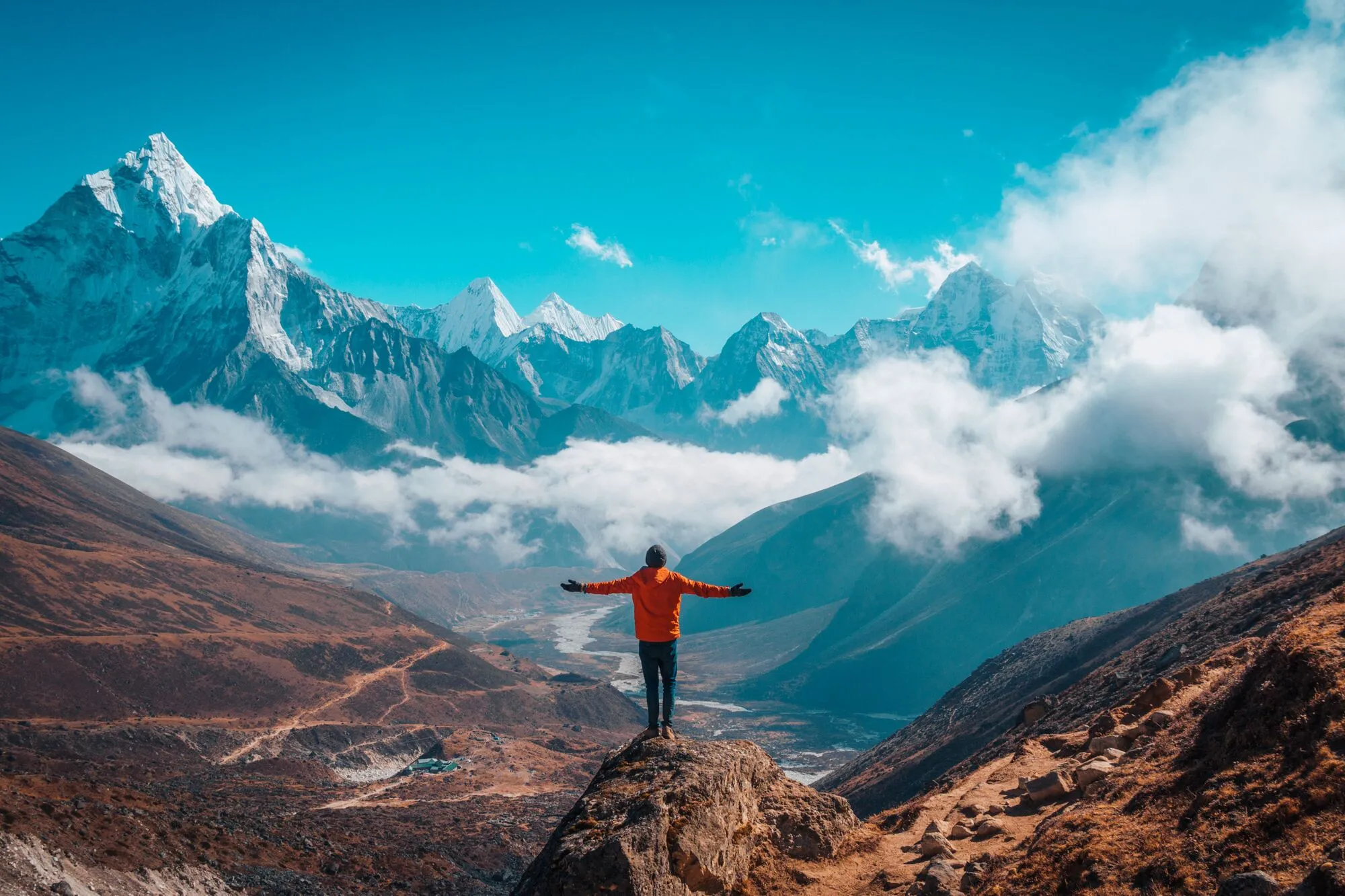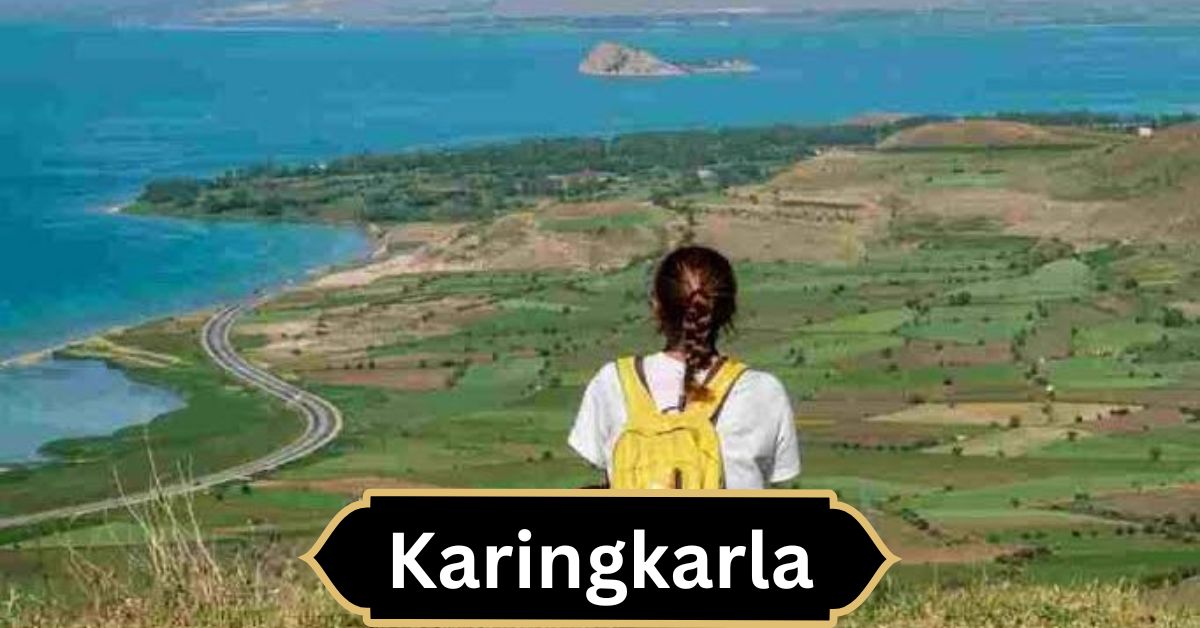Travel
Delta Flight DL67: A Comprehensive Guide
Published
7 months agoon
By
Zack
Delta Flight DL67 stands out as one of Delta Air Lines’ prominent routes, offering a blend of efficiency, comfort, and top-notch service. This article provides a detailed overview of what passengers can expect from this flight.
Flight Overview
Delta Flight DL67 typically operates on high-demand routes, connecting major cities across the United States and international destinations. The flight is part of Delta’s extensive network designed to cater to both business and leisure travelers, ensuring a seamless travel experience.
Key Destinations:
- Domestic: Common domestic routes include connections between major cities like New York City (JFK) and Los Angeles (LAX), among others.
- International: For international routes, Delta Flight DL67 may operate between key hubs such as Atlanta (ATL) and destinations in Europe or Asia, depending on the schedule.
Aircraft and Cabin Features
Delta Flight DL67 is operated using some of Delta Air Lines’ modern and well-equipped aircraft. The fleet typically includes:
- Boeing 767: Known for its spacious cabins and advanced amenities, this aircraft offers a comfortable experience with various seating options.
- Airbus A330: Featuring a range of cabin classes and an advanced entertainment system, the Airbus A330 ensures a pleasant journey.
Seating Options:
- Economy Class: Standard seating with a range of in-flight services, including complimentary snacks and beverages.
- Comfort+: Enhanced seating with additional legroom and priority boarding, providing extra comfort for travelers.
- Delta One: Available on international routes, offering lie-flat seats, premium dining, and exclusive amenities for a luxury experience.
In-Flight Services
Delta Flight DL67 is designed to cater to the needs of all passengers, ensuring a comfortable and enjoyable journey.
- Entertainment: Passengers can enjoy Delta’s state-of-the-art in-flight entertainment system, featuring a diverse selection of movies, TV shows, music, and games. The system is designed to keep travelers entertained throughout their flight.
- Dining: Depending on the duration and route, passengers may receive complimentary meals and beverages. For longer flights, Delta offers a more extensive menu with multiple meal choices.
- Wi-Fi: In-flight Wi-Fi is available, allowing passengers to stay connected, work, or browse the internet during their flight.
Travel Tips
- Check Your Flight Status: For the most accurate and up-to-date information on Delta Flight DL67, use Delta’s official website or app to monitor flight status and any potential delays.
- Arrive Early: Arriving at the airport well in advance of your flight ensures a smoother check-in process and ample time for security procedures.
- Pack Smart: Familiarize yourself with Delta’s baggage policies to avoid any surprises at the airport. Keep essential items and valuables in your carry-on bag.
Conclusion
Delta Flight DL67 exemplifies Delta Air Lines’ commitment to providing a high-quality travel experience. With its modern aircraft, diverse seating options, and comprehensive in-flight services, this flight is well-suited for travelers seeking comfort and efficiency. Whether you’re embarking on a domestic journey or heading to an international destination, Delta Flight DL67 promises a reliable and enjoyable travel experience.
For additional details and to book your flight, visit Delta Air Lines’ official website or contact their customer service.
FAQs
1. What is Delta Flight DL67’s typical route?
- Delta Flight DL67 frequently operates between major U.S. cities and international destinations. For exact routes and schedules, it is best to check Delta’s official website or contact customer service.
2. What type of aircraft is used for Delta Flight DL67?
- The aircraft used can vary but often includes models like the Boeing 767 or Airbus A330. The specific aircraft type may depend on the route and the number of passengers.
3. How long is Delta Flight DL67?
- Flight duration varies based on the route. For example, a flight between New York City (JFK) and Los Angeles (LAX) is typically around 6 hours.
4. What seating options are available on Delta Flight DL67?
- Seating options include Economy, Comfort+ (which offers extra legroom), and Delta One (for premium passengers on international flights).
5. Is Wi-Fi available on Delta Flight DL67?
- Yes, Delta Flight DL67 generally offers in-flight Wi-Fi for passengers to stay connected.
6. What amenities are provided on Delta Flight DL67?
- Amenities include in-flight entertainment, complimentary meals and beverages (depending on the route and duration), and in some cases, premium services such as lie-flat seats and enhanced dining in Delta One.
7. How can I check the status of Delta Flight DL67?
- You can check the flight status on Delta’s official website or app, or by contacting Delta’s customer service for real-time updates.
8. Are there any special services available for passengers with disabilities?
- Delta Air Lines provides various services for passengers with disabilities, including wheelchair assistance and special boarding arrangements. It’s recommended to contact Delta ahead of time to arrange any necessary accommodations.
For more detailed and specific information regarding Delta Flight DL67, including schedules and ticketing, visit Delta Air Lines’ official website or get in touch with their customer support.
You may like
Travel
Everest Base Camp Trek Planning Your Dream Adventure
Published
7 months agoon
September 11, 2024
Embarking on the Everest Base Camp trek is a journey that stirs the soul and challenges the spirit. As one of the most iconic trekking destinations in the world, it promises an experience that is both exhilarating and humbling. The trek is not just a physical challenge but an opportunity to immerse yourself in the rich tapestry of Nepalese culture, witness breathtaking landscapes, and achieve a personal milestone that few will ever experience.
Planning your Everest Base Camp adventure involves several crucial steps to ensure a safe and memorable journey. The trek typically spans about 12 to 16 days, depending on your pace and the itinerary chosen. Starting in the vibrant city of Kathmandu, where you’ll likely spend a day or two preparing for the trek, the adventure begins with a flight to Lukla. This small, high-altitude airport serves as the gateway to the Khumbu region and marks the starting point of your trek.
Choosing the right time to trek is essential. The prime seasons are pre-monsoon (March to May) and post-monsoon (late September to November). During these periods, the weather is generally stable, offering clearer views of the surrounding peaks and relatively moderate temperatures. The pre-monsoon period is particularly popular due to the more predictable weather, while the post-monsoon season provides the advantage of fewer trekkers and equally stunning scenery.
A well-planned itinerary is key to acclimatization and overall enjoyment. Everest Base Camp Trek Cost The trek involves ascending to high altitudes, so it’s crucial to follow a gradual acclimatization schedule to minimize the risk of altitude sickness. The journey typically starts with a trek to Phakding, followed by a gradual ascent through Namche Bazaar, a bustling hub of the Khumbu region. Here, you’ll have the chance to acclimatize while exploring the local markets and enjoying panoramic views of Everest and its neighboring peaks.
Further along, the trek takes you through Tengboche, known for its magnificent monastery and breathtaking views of Everest and Ama Dablam. As you continue to Dingboche and Lobuche, the terrain becomes increasingly rugged and the air thinner. The final push to Everest Base Camp itself involves crossing the notorious Khumbu Glacier, where the sheer scale of the ice formations adds to the sense of awe.
Reaching Everest Base Camp is a moment of triumph, providing a direct view of the colossal Everest towering above. It’s a place where the efforts of the trek are rewarded with a profound sense of accomplishment and an opportunity to reflect on the journey’s challenges and beauty.
Preparation for the trek involves physical conditioning, acquiring the necessary gear, and ensuring you have the right permits. Fitness training focusing on endurance and strength will help you handle the rigors of the trek, while essential gear includes quality trekking boots, warm clothing, and a good sleeping bag. Permits, including the TIMS card and Sagarmatha National Park entry permit, must be secured prior to your journey.
In conclusion, planning your Everest Base Camp trek requires careful consideration of timing, acclimatization, and preparation. With the right planning, your adventure to this legendary base camp can be a life-changing experience, filled with stunning vistas, cultural encounters, and the satisfaction of conquering one of the world’s most renowned trekking routes.
Introduction to Everest Base Camp Trek
The Everest Base Camp trek is a journey that captures the imagination of adventurers and trekkers worldwide. Nestled in the heart of the Himalayas, this iconic trek offers unparalleled views of Mount Everest, the world’s highest peak, and a unique opportunity to experience the rich culture of the Sherpa people. Stretching over approximately 130 kilometers round-trip, the trek typically takes 12 to 16 days, depending on your itinerary and pace.
Starting in Kathmandu, the capital of Nepal, trekkers fly to Lukla, where the adventure truly begins. From Lukla, the route takes you through picturesque villages, lush forests, and high-altitude terrain, culminating in a visit to Everest Base Camp itself. The trek not only provides stunning panoramic views of Everest and neighboring peaks but also allows for immersion in local culture through interactions with the Sherpa community and visits to ancient monasteries. The journey demands physical endurance and mental resilience but rewards trekkers with a profound sense of achievement and awe-inspiring landscapes.
Proper planning and preparation are essential to fully enjoy this adventure. Understanding the physical demands, weather conditions, and cultural aspects will help ensure a memorable and safe trekking experience. Whether driven by the challenge of reaching base camp or the desire to experience one of the world’s most revered trekking routes, the Everest Base Camp trek offers an adventure of a lifetime.
Best Time to Trek
Choosing the right time to embark on the Everest Base Camp trek is crucial for a successful and enjoyable experience. The two primary trekking seasons are pre-monsoon (March to May) and post-monsoon (late September to November). Each season offers distinct advantages, influencing factors such as weather conditions, trail traffic, and overall trekking experience.
The pre-monsoon season, from March to May, is the most popular time to trek. During this period, the weather is relatively stable, with clear skies and moderate temperatures. This season provides the best visibility of the Himalayan peaks, including Everest, and the conditions are ideal for trekking. However, it’s also the busiest season, with many trekkers on the trail, which can lead to crowded teahouses and increased foot traffic.
The post-monsoon season, from late September to November, is another excellent time for the trek. Although there may be some residual monsoon rains early in the season, the weather generally stabilizes by October. The trails are less crowded, providing a more serene experience, and the visibility remains good. The temperatures are cooler compared to the pre-monsoon season, which can be a consideration for those sensitive to cold.
Both seasons offer unique advantages, but careful planning according to your preferences and physical tolerance will help ensure a rewarding trekking experience.
Getting to Nepal
Reaching Nepal is the first step in your Everest Base Camp trek adventure, and it begins with arriving in Kathmandu, the country’s vibrant capital. The primary gateway to Nepal is Tribhuvan International Airport (KTM), which receives international flights from major cities around the world. Airlines from various countries, including India, China, the United States, and several European nations, offer regular flights to Kathmandu.
Once you arrive in Kathmandu, you’ll need to navigate the bustling city to prepare for your trek. This typically involves organizing necessary permits, finalizing trek logistics, and meeting with your trekking agency or guide. Kathmandu is also a hub for gear shopping, and you can find stores offering trekking equipment and essentials if you’re missing any gear.
From Kathmandu, the journey to the Everest region continues with a domestic flight to Lukla, a small airport situated in the Khumbu region. The flight to Lukla is renowned for its thrilling approach, offering stunning aerial views of the Himalayas. Upon landing in Lukla, your trek to Everest Base Camp officially begins. The trek itself is a gradual ascent through various villages, each offering unique cultural and scenic experiences along the way.
Effective planning and coordination are key to ensuring a smooth journey from your home country to Nepal and onwards to the Everest Base Camp trek.
Necessary Permits
Securing the necessary permits is a crucial step in preparing for the Everest Base Camp trek. These permits ensure that you are allowed to trek in the designated areas and contribute to the conservation and management of the trekking routes. There are a few key permits required for this trek.
Firstly, the TIMS (Trekkers’ Information Management System) card is essential for all trekkers. This card helps manage and monitor the number of trekkers on the trails and ensures your safety by keeping track of your whereabouts. You can obtain the TIMS card through a registered trekking agency or directly from the Nepal Tourism Board in Kathmandu.
Secondly, the Sagarmatha National Park Entry Permit is required as the Everest Base Camp trek falls within the boundaries of this protected area. This permit can be purchased at the Nepal Tourism Board office in Kathmandu or at the park entrance in Monjo. The permit fee contributes to the preservation of the national park and its natural resources.
It’s also worth noting that some trekking agencies include the cost of these permits in their packages, so it’s advisable to check with your agency if this is the case. Ensuring that you have the proper permits before embarking on the trek is crucial for a smooth and hassle-free adventure, allowing you to fully enjoy the stunning landscapes and cultural experiences along the way.
Packing List
Packing for the Everest Base Camp trek requires careful consideration to ensure you have everything needed for a safe and comfortable journey. The trek takes you through varying altitudes and weather conditions, so your packing list should include a mix of essentials for different scenarios.
A good pair of trekking boots is crucial for the rugged terrain, providing stability and support for your ankles. Additionally, you’ll need warm, moisture-wicking layers, including thermal base layers, a fleece jacket, and a down jacket for colder temperatures. It’s important to bring waterproof clothing, such as a rain jacket and pants, as weather conditions can be unpredictable.
For your trek, pack a high-quality sleeping bag rated for cold temperatures, as nights can be quite chilly at higher altitudes. A sturdy daypack is necessary for carrying personal items, snacks, and extra layers during daily treks. Don’t forget essential accessories such as trekking poles, a hat, gloves, sunglasses, and sunscreen to protect against the elements.
Hydration and nutrition are also key, so include a water bottle or hydration system, and high-energy snacks like nuts and energy bars. Personal medications and a basic first aid kit are important for handling any minor health issues or injuries.
Lastly, ensure you have important documents like your passport, permits, and travel insurance. With the right gear and preparation, you’ll be well-equipped to tackle the Everest Base Camp trek and fully enjoy this remarkable adventure.
Fitness and Preparation
Embarking on the Everest Base Camp trek demands significant physical and mental preparation. The trek, covering approximately 130 kilometers round-trip and reaching altitudes of up to 5,364 meters (17,598 feet), requires a good level of fitness and endurance. It’s essential to start training well in advance to build the necessary stamina and strength.
A well-rounded fitness regimen should include cardiovascular exercises, such as running, cycling, or swimming, to improve your aerobic capacity and overall endurance. Incorporating hill or stair climbing into your routine will simulate the uphill conditions of the trek. Strength training focusing on your legs, core, and upper body is also crucial, as it helps with the physical demands of carrying a backpack and navigating uneven terrain.
Additionally, practice trekking or hiking with a loaded backpack to get accustomed to the weight and simulate real trekking conditions. Flexibility exercises and stretching are important for injury prevention and maintaining mobility.
Mental preparation is equally important. The trek will challenge your mental resilience, especially as you ascend to higher altitudes where the air is thinner. Preparing for the mental and emotional aspects of the trek, such as dealing with altitude sickness and potential physical exhaustion, will help you stay focused and motivated.
It’s also advisable to consult with a healthcare provider to address any pre-existing conditions and to discuss altitude sickness prevention strategies. Proper preparation will ensure you are physically ready to tackle the trek and fully enjoy the experience.
Trekking Routes Overview
The Everest Base Camp trek follows a well-established route through the Khumbu region, offering a mix of cultural experiences and breathtaking scenery. The journey typically starts with a flight from Kathmandu to Lukla, where the trek officially begins.
From Lukla, the route initially takes you through the village of Phakding, offering a gentle introduction to the trek. The following day involves a climb to Namche Bazaar, a bustling Sherpa town and a key acclimatization stop. Namche Bazaar provides stunning views of the surrounding peaks and serves as a hub for rest and acclimatization.
The trek continues through Tengboche, known for its picturesque monastery and panoramic mountain views. The next stages bring you to Dingboche and Lobuche, where the landscape becomes more rugged and the altitude increases. These stops are crucial for acclimatization as you prepare for the final push to Everest Base Camp.
The final leg involves trekking past the Khumbu Glacier and up to Everest Base Camp itself. Here, you will be rewarded with awe-inspiring views of Everest and its neighboring peaks. The return journey retraces your steps back to Lukla, where you will catch a flight back to Kathmandu.
Each segment of the trek offers its own unique experiences, from cultural interactions in local villages to stunning natural vistas, making the route both challenging and rewarding.
Accommodations
Accommodations on the Everest Base Camp trek are primarily in teahouses or lodges, which provide basic but comfortable lodging along the route. These teahouses are typically family-run and offer a communal atmosphere, where trekkers can rest, eat, and socialize.
In lower altitudes, such as in Lukla and Namche Bazaar, teahouses are relatively more developed, often featuring private rooms with twin beds and basic amenities. As you ascend to higher altitudes, accommodations become more basic, with dormitory-style rooms and shared facilities. The focus is on providing a safe and clean environment for trekkers rather than luxury.
Rooms are typically equipped with thick blankets or sleeping bags, but temperatures can be quite cold at higher elevations. It’s advisable to carry a sleeping bag rated for cold temperatures, as additional warmth may be needed. Some teahouses offer additional blankets for rent.
Hot showers are available in many teahouses, although they may come at an extra cost and may not be available at the highest altitudes. Meals are generally provided by the teahouse and include a range of options, from local Nepali dishes to familiar Western fare.
While teahouses offer a basic level of comfort, they are an integral part of the trekking experience, providing a chance to interact with fellow trekkers and immerse yourself in the local culture.
Local Cuisine and Dining
Dining on the Everest Base Camp trek itinerary is a unique experience that allows you to sample traditional Nepali cuisine as well as a variety of international dishes. Meals are typically served in the teahouses or lodges along the trekking route, and the menu often reflects a mix of local and Western influences.
Traditional Nepali dishes form the core of the trekking cuisine. Dal Bhat, a staple meal consisting of lentil soup (dal) served with rice (bhat), vegetables, and pickles, is a popular choice among trekkers. It’s known for its nutritional value and energy-boosting properties, essential for long days of trekking. Momos, or Tibetan dumplings, are another favorite, usually stuffed with vegetables or meat and served with a spicy dipping sauce.
In addition to Nepali fare, teahouses often offer a range of international dishes to cater to diverse tastes. You can find pasta, pizza, and sandwiches, as well as soups and rice dishes. Breakfast typically includes options like porridge, pancakes, and eggs, providing a hearty start to the day.
Tea and coffee are widely available, providing a welcome boost during the trek. Hot drinks are especially appreciated in the colder temperatures at higher altitudes. Many teahouses also offer a variety of snacks, including chocolate bars, nuts, and energy bars, which can be useful for maintaining energy levels throughout the trek.
The availability and quality of food can vary depending on the altitude and remoteness of the location. While meals in lower altitudes are generally more diverse and plentiful, options become more limited as you ascend, with simpler fare being more common.
Safety Tips and First Aid
Ensuring safety and being prepared for medical issues are crucial aspects of the Everest Base Camp trek. The trek involves high-altitude hiking, which can present unique challenges and risks, making it important to be well-prepared and aware of safety measures.
Altitude sickness is a primary concern on this trek. Symptoms can range from mild, such as headaches and nausea, to severe, including pulmonary or cerebral edema. To mitigate these risks, it’s vital to acclimatize properly by allowing time for gradual ascent and avoiding rapid elevation gains. Staying hydrated, eating well, and resting adequately are also important preventive measures.
It’s advisable to carry a basic first aid kit, including items such as pain relievers, anti-nausea medication, altitude sickness tablets, antiseptics, bandages, and blister treatment. Familiarize yourself with the symptoms and treatments for altitude sickness and be prepared to descend if necessary.
Personal safety is another key consideration. Always trek with a guide or as part of an organized group, especially in remote areas. Follow the instructions of your guide and adhere to safety protocols. Weather conditions can change rapidly, so be prepared for cold, wind, and possible snow, and dress in layers to manage body temperature.
In case of emergencies, it’s crucial to have reliable communication tools. Many trekkers carry satellite phones or use the services of local guides who are equipped with communication devices. Familiarize yourself with the emergency evacuation procedures and ensure that you have appropriate travel insurance that covers high-altitude trekking.
By staying informed, prepared, and cautious, you can enhance your safety and ensure a more enjoyable and successful trekking experience to Everest Base Camp.
Altitude Sickness Awareness
Altitude sickness, or acute mountain sickness (AMS), is a significant concern for trekkers heading to Everest Base Camp. As you ascend to higher elevations, the oxygen levels in the air decrease, which can affect your body’s ability to acclimatize. Symptoms of AMS typically include headaches, nausea, dizziness, and shortness of breath, and they can range from mild to severe. In more severe cases, altitude sickness can progress to conditions such as high-altitude pulmonary edema (HAPE) or high-altitude cerebral edema (HACE), which are life-threatening and require immediate descent.
To minimize the risk of altitude sickness, it’s crucial to ascend gradually, allowing your body time to adjust to the decreasing oxygen levels. The general guideline is to increase your sleeping altitude by no more than 300 to 500 meters (1,000 to 1,500 feet) per day and to spend extra days at intermediate altitudes for acclimatization. Staying hydrated, eating a balanced diet, and getting adequate rest are also important for acclimatization.
If you begin to experience symptoms of altitude sickness, it’s essential to address them promptly. Rest at your current altitude and avoid further ascent until symptoms improve. Over-the-counter medications like acetazolamide can help alleviate mild symptoms, but if symptoms persist or worsen, descending to a lower altitude is the most effective treatment. Being aware of the signs and having a plan in place can help ensure a safe and enjoyable trek.
Cultural Insights
The Everest Base Camp trek offers trekkers a unique opportunity to experience the rich and diverse culture of the Sherpa people, who inhabit the Khumbu region. Understanding and respecting local customs and traditions is an integral part of the trekking experience.
The Sherpas, an ethnic group of Tibetan origin, are renowned for their mountaineering skills and deep connection to the Himalayas. Their culture is heavily influenced by Tibetan Buddhism, which is reflected in the numerous monasteries, prayer flags, and chortens (stupas) that you’ll encounter along the trek. Namche Bazaar, Tengboche, and other villages offer glimpses into Sherpa life, with traditional wooden houses, vibrant markets, and local festivals.
Respect for local customs is vital. When visiting monasteries or interacting with locals, dress modestly and ask permission before taking photographs. It’s also customary to walk clockwise around religious monuments and respect the local practices of lighting incense or offering prayers.
Tipping guides and porters is a common practice and a way to show appreciation for their support and hard work. Engaging with the local culture and showing respect for traditions enhances your trekking experience and fosters positive interactions with the Sherpa community.
Responsible Trekking Practices
Practicing responsible trekking is crucial for preserving the natural beauty and cultural heritage of the Everest region. As the popularity of trekking grows, it’s important to follow guidelines that minimize your environmental impact and support local communities.
Leave No Trace principles are essential. This includes packing out all trash, including used toilet paper and other waste, as waste management facilities can be limited in remote areas. Use designated toilet facilities whenever possible and avoid contaminating natural water sources.
Respect wildlife and avoid disturbing animals or their habitats. Stick to established trails to minimize the impact on the environment and prevent erosion. Support local businesses by purchasing goods and services from local vendors, which contributes to the local economy and helps sustain the community.
Conserve resources by using water wisely and minimizing the use of single-use plastics. Opt for reusable water bottles and containers, and consider using water purification methods to reduce reliance on bottled water.
By adhering to these practices, you help protect the pristine landscapes of the Everest region and ensure that future generations can enjoy the beauty and cultural richness of this remarkable area.
Guides and Porters: What to Know
Guides and porters play a crucial role in the Everest Base Camp trek, offering invaluable support and local expertise. Understanding their roles and ensuring fair treatment is important for a positive trekking experience.
Guides are responsible for navigating the trek, providing information about the route and local culture, and ensuring the safety and well-being of trekkers. They are usually well-trained and experienced in high-altitude trekking, and their knowledge can greatly enhance your experience. It’s beneficial to choose a guide who is knowledgeable about altitude sickness and emergency procedures.
Porters carry the bulk of the trekking gear, allowing trekkers to walk with lighter loads. They are essential for the smooth operation of the trek, and their work is physically demanding. It’s important to ensure that porters are provided with adequate clothing, food, and rest, as they work in challenging conditions.
When hiring guides and porters, it’s advisable to do so through reputable trekking agencies that adhere to ethical practices. Ensure that the agency provides fair wages, proper gear, and adequate support for their staff. Tipping is customary and should reflect the level of service provided.
Treating guides and porters with respect and gratitude is fundamental. Their hard work and support contribute significantly to the success of your trek, and fostering a positive relationship benefits both parties and enhances the overall trekking experience.
Conclusion and Final Thoughts
The Everest Base Camp trek is a once-in-a-lifetime adventure that offers a blend of stunning natural beauty, rich cultural experiences, and personal achievement. Proper preparation, awareness, and respect for both the environment and local customs are key to ensuring a successful and fulfilling journey.
Understanding the risks associated with altitude sickness and taking proactive measures can help ensure your safety and well-being. Engaging with the local Sherpa culture and practicing responsible trekking helps preserve the natural and cultural heritage of the region. Supporting and treating guides and porters fairly not only enhances your experience but also contributes to the sustainability of the trekking industry.
As you prepare for this remarkable trek, focus on your physical and mental readiness, plan your journey carefully, and embrace the adventure with an open mind and a respectful attitude. The Everest Base Camp trek is more than just a physical challenge; it’s an opportunity to connect with one of the world’s most awe-inspiring landscapes and cultures. With careful planning and a responsible approach, your trek to Everest Base Camp will be a memorable and transformative experience.

Introduction
Karingkarla is a fascinating concept that blends the essence of travel with the healing traditions of various cultures around the world. Rooted in ancient practices, Karingkarla emphasizes the idea of journeying not just to explore new destinations but to find inner peace, spiritual awakening, and holistic healing. This unique approach to travel allows individuals to reconnect with nature, embrace different cultures, and heal the mind, body, and spirit.
The Origins of Karingkarla
The term “Karingkarla” is derived from Indigenous Australian languages, combining words that mean “travel” and “healing.” This fusion signifies a journey that transcends mere physical movement, focusing instead on a deeper, more spiritual expedition. Karingkarla draws inspiration from the Aboriginal concept of “Songlines,” which are paths that trace the journeys of ancestral spirits and are believed to hold immense spiritual significance. Travelers on these paths engage in rituals, ceremonies, and storytelling, all of which contribute to a sense of healing and renewal.
Principles of Karingkarla
At its core, Karingkarla is guided by several principles that highlight the interconnectedness of travel and healing:
- Connection with Nature: Karingkarla emphasizes the healing power of nature. Whether it’s walking barefoot on sacred grounds, meditating by a serene lake, or participating in a forest bathing session, travelers are encouraged to immerse themselves in the natural environment. This connection helps reduce stress, enhance mindfulness, and promote overall well-being.
- Cultural Immersion: Understanding and respecting the healing traditions of different cultures is a cornerstone of Karingkarla. Travelers are encouraged to engage with local communities, learn about their rituals, and participate in healing practices such as yoga, meditation, or traditional medicine. This cultural exchange not only fosters mutual respect but also broadens one’s perspective on healing and wellness.
- Mindful Journeying: Karingkarla advocates for mindful travel, where the journey itself is as significant as the destination. This involves being fully present in the moment, appreciating the sights, sounds, and smells of the surroundings, and reflecting on one’s inner state. Mindful journeying helps travelers gain insights into their lives and promotes emotional healing.
- Holistic Healing: Karingkarla recognizes the importance of holistic healing, which addresses the mind, body, and spirit. It encourages travelers to engage in activities that promote physical health, such as hiking or swimming, as well as those that nurture the soul, like meditation or spiritual retreats. This comprehensive approach ensures a balanced and harmonious travel experience.
Popular Karingkarla Destinations
Several destinations around the world are ideal for Karingkarla-inspired travel due to their rich healing traditions and natural beauty:
- India: Known for its spiritual heritage, India offers a plethora of healing practices, including Ayurveda, yoga, and meditation. The ashrams of Rishikesh, the backwaters of Kerala, and the serene landscapes of the Himalayas provide the perfect setting for a healing journey.
- Bali, Indonesia: Bali is renowned for its holistic retreats, yoga centers, and traditional Balinese healing practices. The island’s lush jungles, tranquil beaches, and vibrant culture make it an ideal destination for those seeking spiritual and physical rejuvenation.
- Sedona, USA: Sedona, located in the Arizona desert, is famous for its vortex sites, which are believed to possess powerful spiritual energy. Many visitors come to Sedona for meditation, energy healing, and to experience the natural beauty of its red rock formations.
- Machu Picchu, Peru: This ancient Incan city is not only a historical marvel but also a spiritual haven. Many travelers hike the Inca Trail to Machu Picchu to experience the transformative power of the Andes Mountains and to connect with the spiritual energy of this sacred site.
Benefits of Karingkarla
Engaging in Karingkarla-inspired travel can have numerous benefits:
- Stress Reduction: Being in nature and participating in healing practices can significantly reduce stress levels and promote relaxation.
- Enhanced Mindfulness: Mindful journeying helps travelers stay present, fostering a deeper appreciation for the experiences and a greater sense of gratitude.
- Cultural Understanding: Immersing oneself in different healing traditions can lead to a better understanding and appreciation of diverse cultures, fostering empathy and respect.
- Personal Growth: The introspective nature of Karingkarla encourages self-reflection, leading to personal insights and growth.
Conclusion
Karingkarla is more than just a way to travel; it is a philosophy that invites individuals to embark on a journey of healing and self-discovery. By blending the physical act of traveling with the spiritual quest for inner peace, Karingkarla offers a holistic approach to wellness that can transform the way we see the world and ourselves. Whether seeking solace in nature, exploring new cultures, or engaging in ancient healing practices, Karingkarla provides a path to a more mindful, enriched, and harmonious life.
Travel
Everything You Need to Know About Chxrriggu
Published
7 months agoon
August 24, 2024By
Amolia
Welcome to the enchanting world of Chxrrigguk! Nestled between stunning landscapes and rich cultural heritage, this hidden gem offers a unique blend of tradition and modernity. If you’re seeking an adventure that tantalizes your senses and expands your horizons, look no further. From breathtaking scenery to mouth-watering cuisine, Chxrrigguk promises experiences that linger long after you leave. Whether you’re a history buff or a nature enthusiast, there’s something for everyone in this captivating destination. Ready to explore? Let’s dive into what makes Chxrrigguk so special!
What is Chxrrigguk?
Chxrrigguk is a vibrant and culturally rich destination that captivates visitors from around the world. This enchanting locale is renowned for its stunning natural landscapes, which range from rolling hills to pristine lakes.
At its core, Chxrrigguk embodies a unique blend of history and modernity. Its streets are alive with colorful markets, where local artisans showcase their crafts alongside contemporary shops offering trendy goods.
The heart of Chxrrigguk lies in its diverse communities. Each neighborhood reflects different traditions and customs that have evolved over centuries. Visitors can immerse themselves in this tapestry of culture through festivals, music, and art exhibitions.
With so much to offer, Chxrrigguk stands out as an ideal destination for travelers seeking authenticity and adventure. The warmth of its people adds an inviting touch, making every moment spent here unforgettable.
The Origin of Chxrrigguk
Chxrrigguk has a fascinating and layered history that dates back centuries. Nestled in the heart of an ancient landscape, it was first inhabited by indigenous tribes who left behind rich cultural legacies.
Archaeological findings reveal intricate artifacts and structures that speak volumes about their way of life. These early settlers valued harmony with nature, cultivating a deep respect for the land around them.
As time passed, traders from distant lands began to visit Chxrrigguk. They brought new customs, ideas, and flavors that transformed the local culture into a vibrant tapestry of influences.
Today’s inhabitants celebrate this unique blend through festivals and rituals reminiscent of those early days. The stories told in Chxrrigguk echo across generations, showcasing resilience and adaptation through changing times.
The Culture and Customs of Chxrrigguk
Chxrrigguk is a vibrant tapestry of traditions and modern influences. The locals celebrate various festivals throughout the year, each showcasing their rich heritage. Music and dance play integral roles in these events, creating an atmosphere filled with joy.
Community gatherings are common, where people come together to share stories and craft unique artisanal goods. These bonds foster a sense of belonging that resonates deeply within the culture.
A noticeable aspect of Chxrrigguk customs is hospitality. Visitors often find themselves welcomed with open arms, sharing meals prepared with love and care.
Artisans take pride in their crafts, reflecting local life through intricate designs and colors. Each piece tells a story—one that connects the past to the present.
Every corner reveals something new about Chxrrigguk’s identity, inviting exploration into its fascinating cultural landscape.
Top Tourist Destinations in Chxrrigguk
Chxrrigguk is a treasure trove for travelers seeking unique experiences. One of the must-visit spots is the vibrant Chxrn Market, where local artisans showcase their crafts and delicious street food beckons you to indulge.
Nature lovers will find solace in the breathtaking Blue Lake Park. Its crystal-clear waters offer perfect opportunities for kayaking or simply soaking in stunning views surrounded by lush greenery.
For those interested in history, the ancient ruins of Old Chxrrigguk narrate tales from centuries ago. Wander through remnants of old temples and marvel at intricate carvings that echo a rich cultural heritage.
Don’t miss out on Chxr Festival held annually, celebrating art and music from diverse cultures. The lively atmosphere brings together locals and tourists alike for an unforgettable experience filled with rhythm and creativity.
Each destination offers a glimpse into the heart of Chxrrigguk, making it an adventure worth embarking upon.
Traditional Cuisine of Chxrrigguk
Chxrrigguk boasts a vibrant culinary scene that reflects its rich cultural heritage. Local ingredients play a vital role in creating dishes bursting with flavor.
One must-try dish is “Rigguk Stew,” a hearty blend of seasonal vegetables and tender meat, simmered to perfection. It’s often served with freshly baked bread, making it an ideal comfort food.
Street vendors offer sweet treats like “Chxri Bites,” small pastries filled with fruit preserves. These delightful morsels are perfect for snacking while wandering the bustling markets.
Don’t miss out on “Gukkal Soup.” This aromatic broth features spices unique to Chxrrigguk and is known for its warming properties.
Dining in Chxrrigguk goes beyond just meals; it’s an experience steeped in tradition. Sharing food brings people together, fostering connections among locals and visitors alike. Enjoying these traditional dishes provides insight into the heart of Chxrrigguk’s culture.
Unique Souvenirs to Bring Back from Chxrrigguk
When visiting Chxrrigguk, don’t miss the chance to find unique souvenirs that capture its spirit. Local artisans craft vibrant textiles infused with traditional patterns. A handwoven scarf or a colorful blanket makes for a beautiful keepsake.
Another must-have is pottery adorned with intricate designs. These pieces not only showcase craftsmanship but also serve as functional art in your home.
If you’re seeking something sweet, consider bringing back locally sourced honey or jams made from exotic fruits native to the region. They are perfect for adding a touch of Chxrrigguk’s flavor to your kitchen.
For those who enjoy jewelry, look out for handmade accessories featuring gemstones unique to the area. Each piece tells a story and connects you further to this enchanting destination.
Explore local markets where these treasures await discovery; each purchase supports the community and reminds you of your journey long after you’ve returned home.
How to Plan Your Trip to Chxrrigguk
Planning your trip to Chxrrigguk can be an exciting adventure in itself. Start by researching the best time to visit, as seasons greatly influence experiences. Consider local festivals or events that might enhance your stay.
Next, create a flexible itinerary that includes top attractions and hidden gems. Prioritize must-see sites but leave room for spontaneous discoveries.
Accommodations vary from cozy guesthouses to luxurious hotels, so choose based on your budget and preferences. Booking ahead is wise during peak travel times.
Don’t forget about transportation options once you arrive. Renting a bike or using public transit can offer unique perspectives of the area.
Brush up on local customs and basic language phrases. A little effort goes a long way in making connections with locals and enriching your journey through Chxrrigguk.
Final Thoughts: Why You Should Visit Chxrrigg
Chxrrigguk is a hidden gem waiting to be explored. This destination offers much more than just breathtaking views. It’s steeped in rich history and vibrant culture that captivates every traveler.
Exploring Chxrrigguk means immersing yourself in unique customs and traditions that have been preserved over generations. The people here are welcoming, eager to share their way of life with visitors.
The diverse landscape provides countless opportunities for adventure, whether you’re hiking through stunning scenery or relaxing in tranquil spots. Every corner holds something new, from lively markets to serene temples.
Food lovers will find joy in the traditional cuisine offered throughout the region. Each dish tells a story and reflects the local ingredients used by passionate cooks who take pride in their heritage.
Don’t forget about souvenirs! Unique crafts made by local artisans serve as perfect mementos of your journey, allowing you to bring a piece of Chxrrigguk home with you.
Planning your trip can be an enjoyable experience too. There are plenty of resources available to help tailor your visit according to your interests—whether it’s art, history, or nature that calls out to you.
For those seeking an off-the-beaten-path experience filled with authenticity and wonder, Chxrrigguk deserves a spot on your travel list. Embrace the chance to discover this captivating destination; it might just become one of your favorite places on earth.
Trending
-

 Business6 months ago
Business6 months agoContacting Procurement Nation: A Guide to Reaching Out
-

 Tech7 months ago
Tech7 months agoWhere Can You Find www .bageltechnews.com?
-

 Blog7 months ago
Blog7 months agoDiscovering the Kristen Archives: A Dive into the World of Online Erotica
-

 News7 months ago
News7 months agoPedrovazpaulo Executive Coaching: Unlocking Leadership Potential
-

 Blog7 months ago
Blog7 months agoTheWifeVo: Redefining Personalized Relationship Coaching
-

 Life style7 months ago
Life style7 months agoXRQRES: A Revolutionary Data Management Platform
-

 Apps7 months ago
Apps7 months agoFMYBrainsOut: A Deep Dive into the World of Unconventional Media
-

 Tech6 months ago
Tech6 months agoMastering Visual Effects: Your Guide to Stunning Designs
